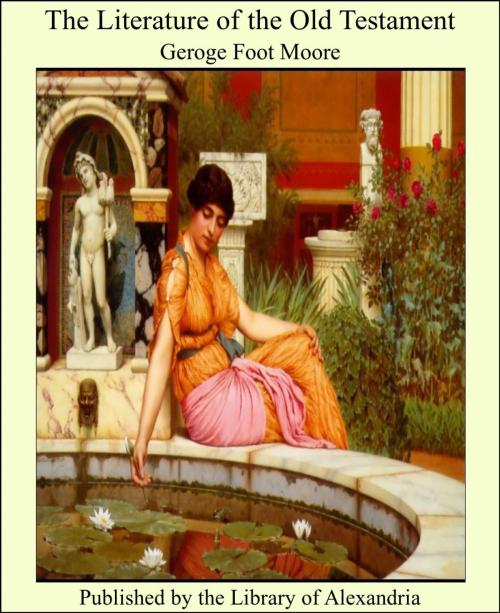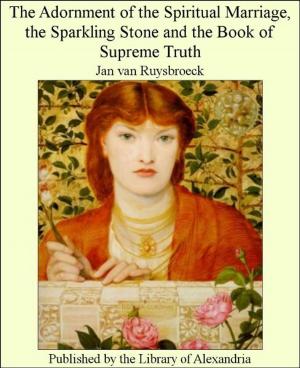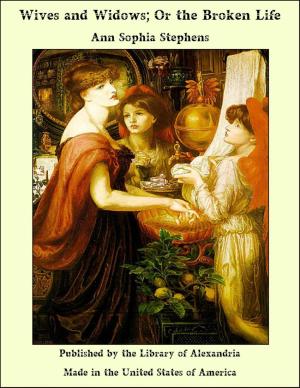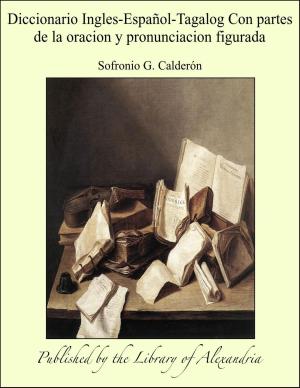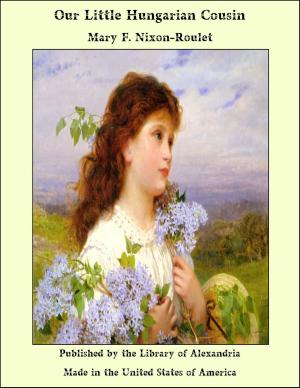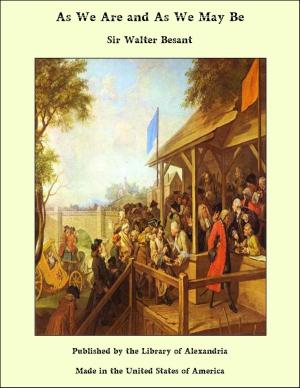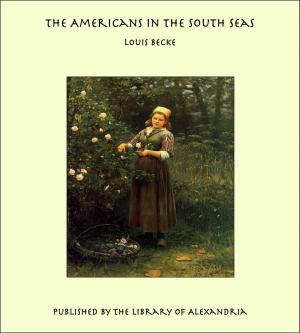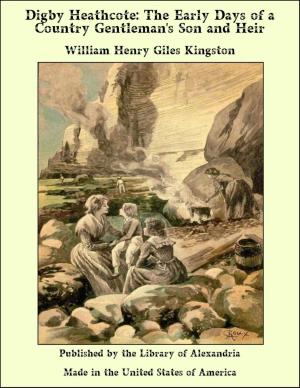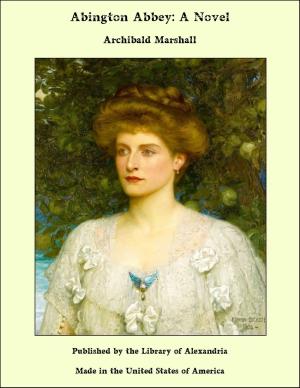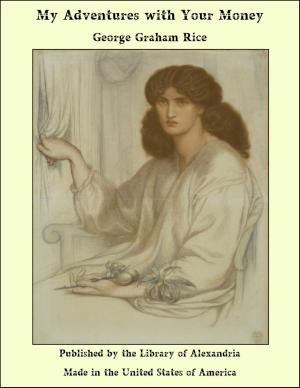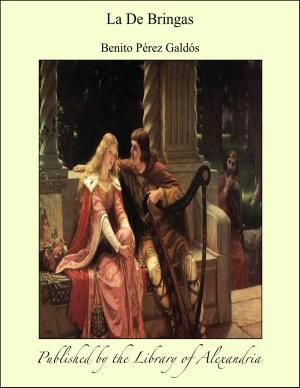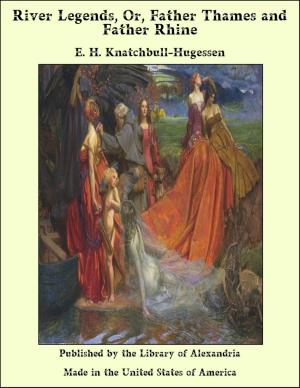The Literature of the Old Testament
Nonfiction, Religion & Spirituality, New Age, History, Fiction & Literature| Author: | Geroge Foot Moore | ISBN: | 9781465533913 |
| Publisher: | Library of Alexandria | Publication: | March 8, 2015 |
| Imprint: | Language: | English |
| Author: | Geroge Foot Moore |
| ISBN: | 9781465533913 |
| Publisher: | Library of Alexandria |
| Publication: | March 8, 2015 |
| Imprint: | |
| Language: | English |
THE CANON OF THE OLD TESTAMENT The early Christians received the Sacred Books of the Jews as inspired Scripture containing a divine revelation and clothed with divine authority, and till well on in the first century of the Christian era the name Scriptures was applied exclusively to these books. In time, as they came to attach the same authority to the Epistles and Gospels, and to call them, too, Scriptures (2 Pet. iii. 16), they distinguished the Christian writings as the Scriptures of the new dispensation, or, as they called it, the "new covenant," from the Scriptures of the "old covenant" (2 Cor. iii. 6, 14), the Bible of the Jews. The Greek word for covenant (diathéké) was rendered in the early Latin translation by testamentum, and the two bodies of Scripture themselves were called the Old Testament and the New Testament respectively. The Scriptures of the Jews were written in Hebrew, the older language of the people; but a few chapters in Ezra and Daniel are in Aramaic, which gradually replaced Hebrew as the vernacular of Palestine from the fifth century B.C. The Sacred Books comprise the Law, that is, the Five Books of Moses; the Prophets, under which name are included the older historical books (Joshua, Judges, Samuel, Kings) as well as what we call the Prophets (Isaiah, Jeremiah, Ezekiel, and the Twelve, i.e. Minor Prophets); a third group, of less homogeneous character, had no more distinctive name than the "Scriptures"; it included Ruth, Psalms, Job, Proverbs, Ecclesiastes, Song of Songs, Lamentations, Daniel, Esther, Ezra-Nehemiah, and Chronicles. The Minor Prophets counted as one book; and the division of Samuel, Kings, Ezra-Nehemiah, and Chronicles each into two books was made later, and perhaps only in Christian copies of the Bible. There are, consequently, according to the Jewish enumeration twenty-four books in the Bible, while in the English Old Testament, by subdivision, we count the same books as thirty-nine. The order of the books in the Pentateuch and "Former Prophets" (Joshua-Kings) is fixed by the historical sequence, and therefore constant; among the "Latter Prophets" Jeremiah was sometimes put first, immediately following the end of Kings, with which it was so closely connected. In the third group there was no such obvious principle of arrangement, and consequently there were different opinions about the proper order; that which is given above follows the oldest deliverance on the subject, and puts them in what the rabbis doubtless supposed to be a chronological series. So long as the books were written on separate rolls of papyrus, the question of order was theoretical rather than practical; and even when manuscripts were written in codex form (on folded leaves stitched together like our books), no uniformity was attained. At the beginning of the Christian era, lessons from the Law were regularly read in the synagogues on the sabbath (the Pentateuch being so divided that it was read through consecutively once in three years), and a second lesson was chosen from the Prophets. The title of these books to be regarded as Sacred Scripture was thus established by long-standing liturgical use, and was, indeed, beyond question. Nor was there any question about the inspiration of most of the books in the third group, the "Scriptures." There was a controversy, however, over Ecclesiastes and the Song of Songs; some teachers of the strictest school denied that either of them was inspired, while Others accepted only one of them. The question was voted on in a council of rabbis held at Jamnia about the beginning of the second century of our era, and the majority decided for the inspiration of both books. There were also, even down to the third century, Jewish scholars who did not acknowledge Esther as Sacred Scripture. On the Other hand, some were inclined to include among the Sacred Books the Proverbs of Ben Sira, which stand in the English Bible among the Apocrypha under the title Ecclesiasticus
THE CANON OF THE OLD TESTAMENT The early Christians received the Sacred Books of the Jews as inspired Scripture containing a divine revelation and clothed with divine authority, and till well on in the first century of the Christian era the name Scriptures was applied exclusively to these books. In time, as they came to attach the same authority to the Epistles and Gospels, and to call them, too, Scriptures (2 Pet. iii. 16), they distinguished the Christian writings as the Scriptures of the new dispensation, or, as they called it, the "new covenant," from the Scriptures of the "old covenant" (2 Cor. iii. 6, 14), the Bible of the Jews. The Greek word for covenant (diathéké) was rendered in the early Latin translation by testamentum, and the two bodies of Scripture themselves were called the Old Testament and the New Testament respectively. The Scriptures of the Jews were written in Hebrew, the older language of the people; but a few chapters in Ezra and Daniel are in Aramaic, which gradually replaced Hebrew as the vernacular of Palestine from the fifth century B.C. The Sacred Books comprise the Law, that is, the Five Books of Moses; the Prophets, under which name are included the older historical books (Joshua, Judges, Samuel, Kings) as well as what we call the Prophets (Isaiah, Jeremiah, Ezekiel, and the Twelve, i.e. Minor Prophets); a third group, of less homogeneous character, had no more distinctive name than the "Scriptures"; it included Ruth, Psalms, Job, Proverbs, Ecclesiastes, Song of Songs, Lamentations, Daniel, Esther, Ezra-Nehemiah, and Chronicles. The Minor Prophets counted as one book; and the division of Samuel, Kings, Ezra-Nehemiah, and Chronicles each into two books was made later, and perhaps only in Christian copies of the Bible. There are, consequently, according to the Jewish enumeration twenty-four books in the Bible, while in the English Old Testament, by subdivision, we count the same books as thirty-nine. The order of the books in the Pentateuch and "Former Prophets" (Joshua-Kings) is fixed by the historical sequence, and therefore constant; among the "Latter Prophets" Jeremiah was sometimes put first, immediately following the end of Kings, with which it was so closely connected. In the third group there was no such obvious principle of arrangement, and consequently there were different opinions about the proper order; that which is given above follows the oldest deliverance on the subject, and puts them in what the rabbis doubtless supposed to be a chronological series. So long as the books were written on separate rolls of papyrus, the question of order was theoretical rather than practical; and even when manuscripts were written in codex form (on folded leaves stitched together like our books), no uniformity was attained. At the beginning of the Christian era, lessons from the Law were regularly read in the synagogues on the sabbath (the Pentateuch being so divided that it was read through consecutively once in three years), and a second lesson was chosen from the Prophets. The title of these books to be regarded as Sacred Scripture was thus established by long-standing liturgical use, and was, indeed, beyond question. Nor was there any question about the inspiration of most of the books in the third group, the "Scriptures." There was a controversy, however, over Ecclesiastes and the Song of Songs; some teachers of the strictest school denied that either of them was inspired, while Others accepted only one of them. The question was voted on in a council of rabbis held at Jamnia about the beginning of the second century of our era, and the majority decided for the inspiration of both books. There were also, even down to the third century, Jewish scholars who did not acknowledge Esther as Sacred Scripture. On the Other hand, some were inclined to include among the Sacred Books the Proverbs of Ben Sira, which stand in the English Bible among the Apocrypha under the title Ecclesiasticus
